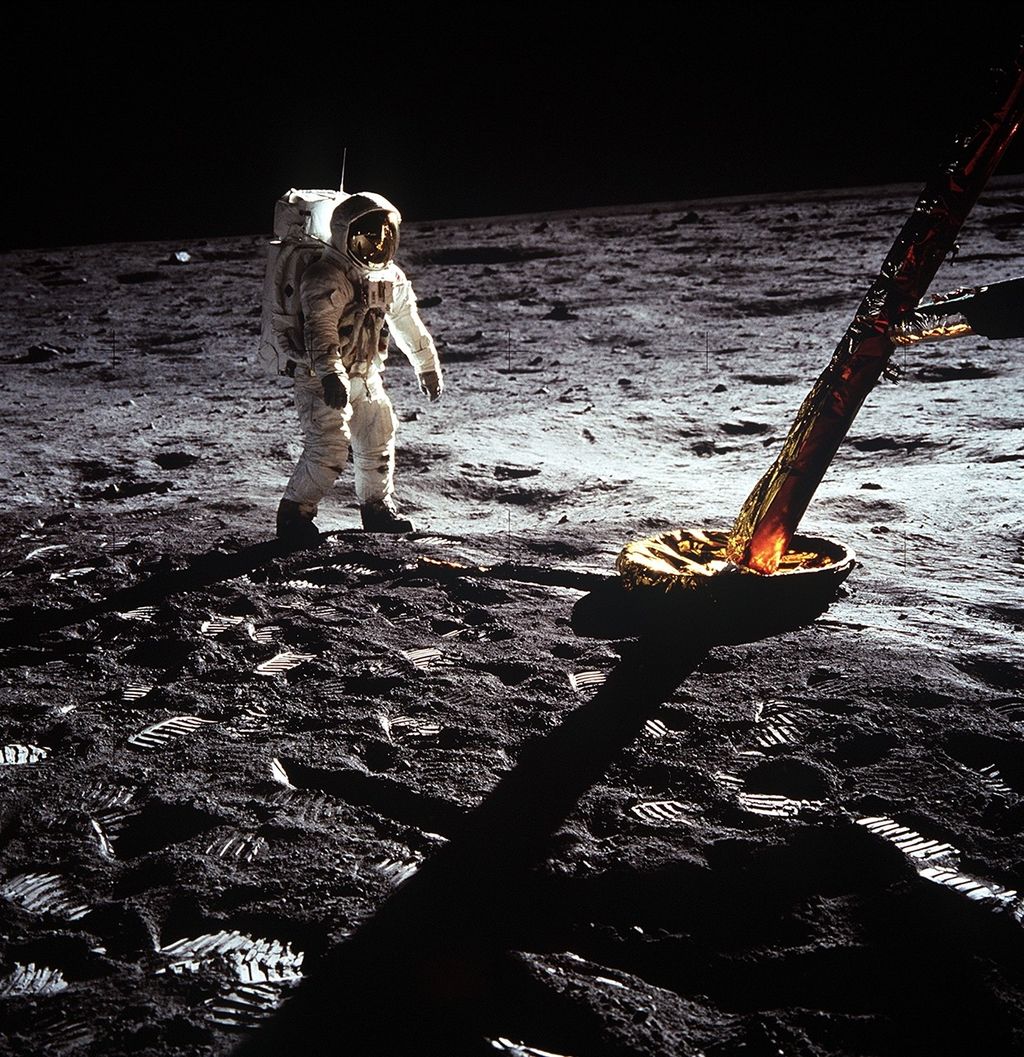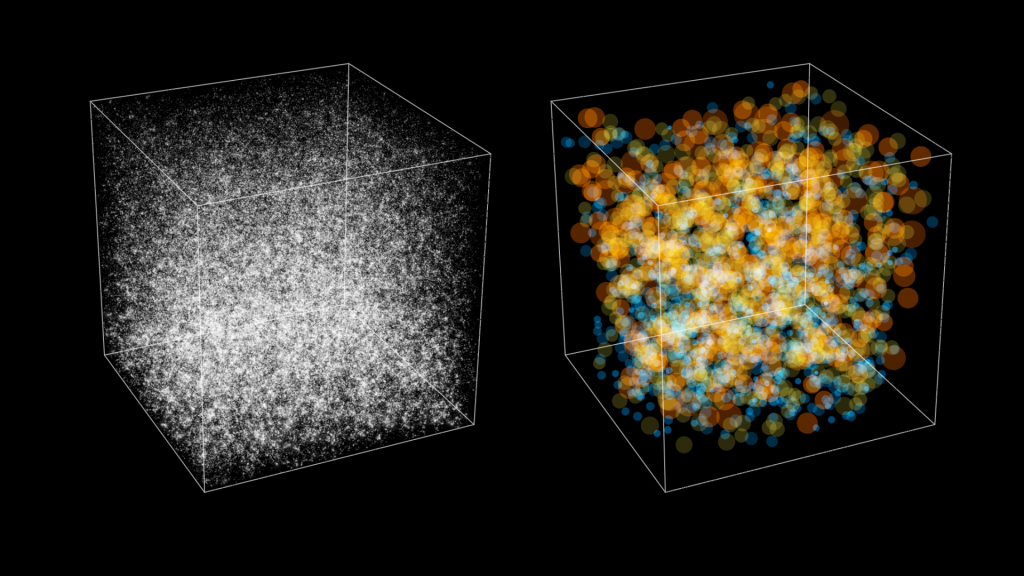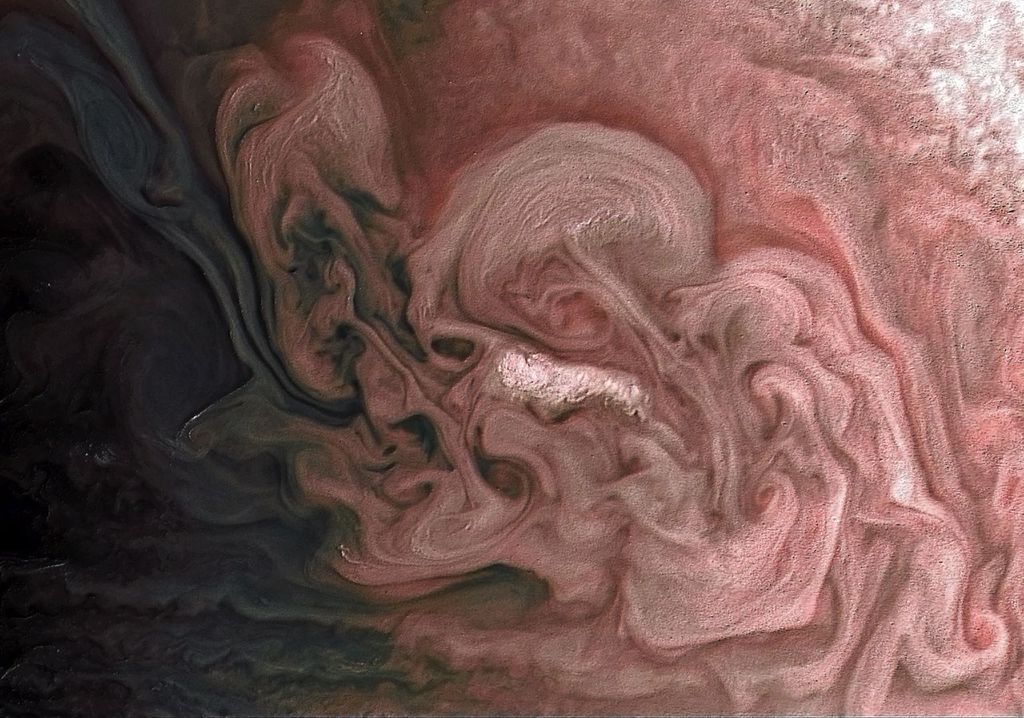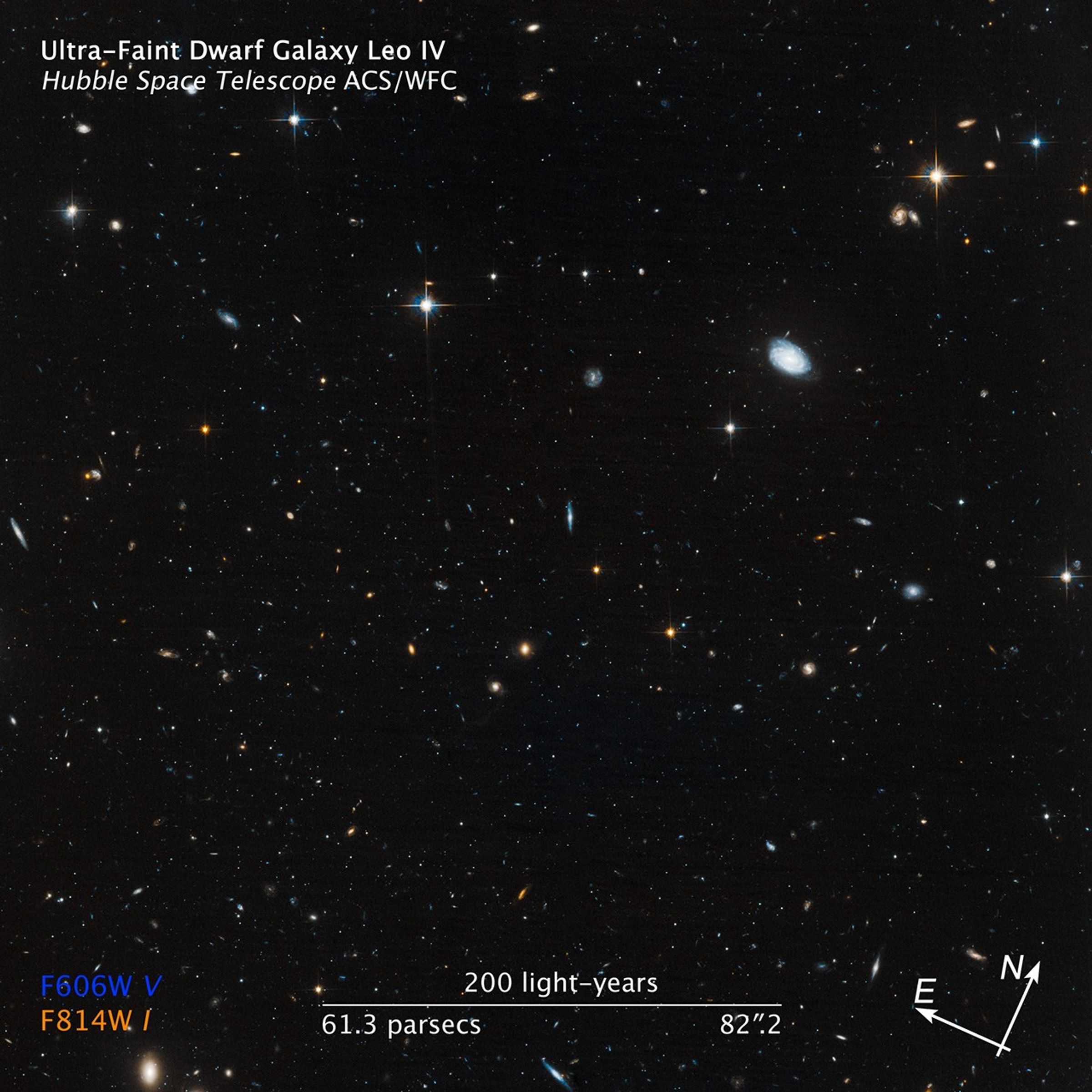1 min read
Location of Ultra-Faint Dwarf Galaxy Leo IV
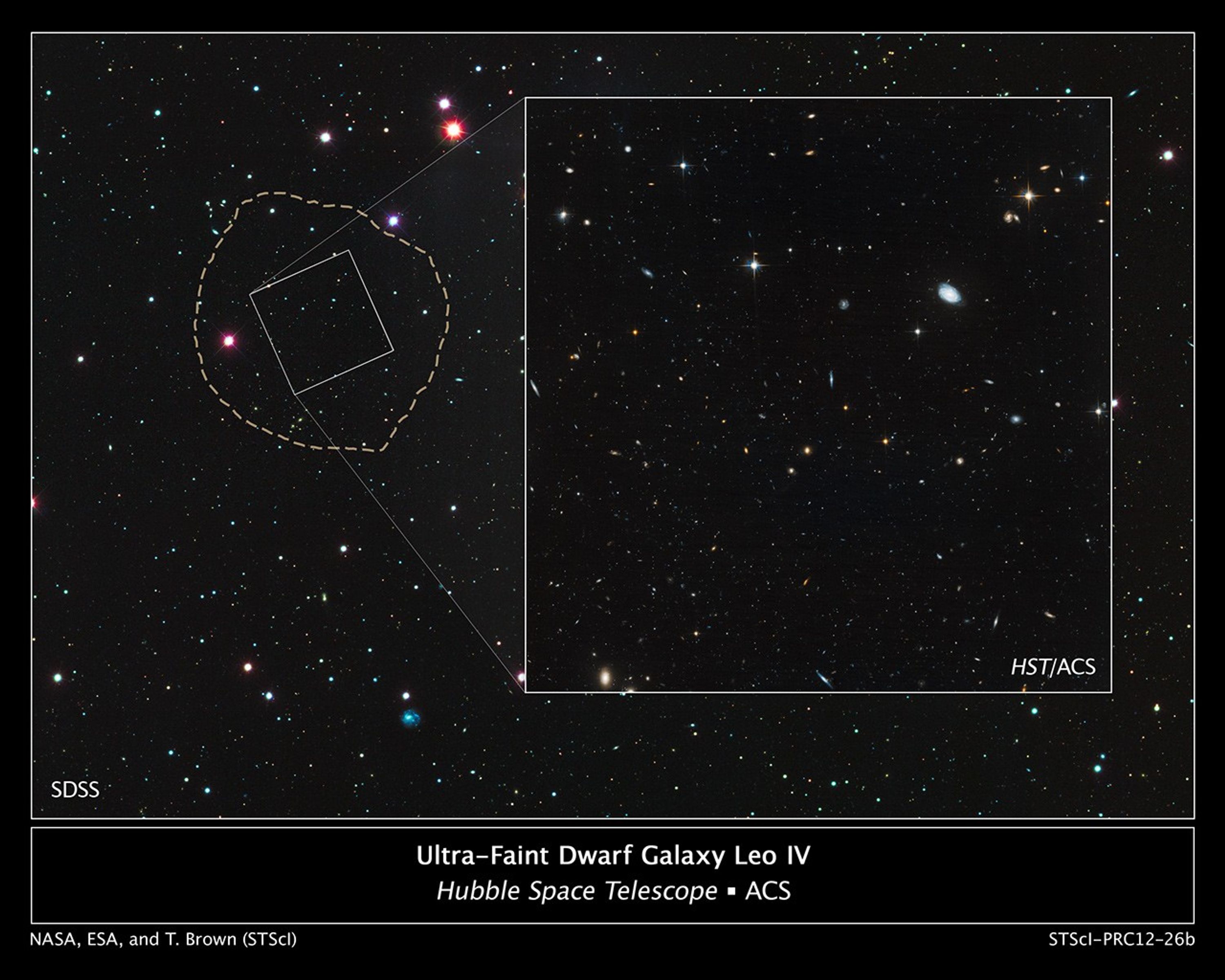
These images reveal the small and faint star-starved dwarf galaxy Leo IV, a close neighbor of our Milky Way galaxy.
Leo IV is one of more than a dozen ultra-faint dwarf galaxies found lurking around the Milky Way. These galaxies are dominated by dark matter, an invisible substance that makes up the bulk of the universe's mass.
The wide image, taken by the Sloan Digital Sky Survey, is a view of Leo IV and the surrounding neighborhood. The galaxy resides 500,000 light-years from Earth. The dotted line marks the galaxy's boundaries, measuring about 1,100 light-years wide. The small white box outlines the Hubble Space Telescope's view.
Leo IV has so few stars, roughly several thousand, that astronomers had difficulty identifying it as a galaxy. Astronomers discovered Leo IV in Sloan Digital Sky Survey images by spotting a region where a clump of stars was huddled closer together than stars in areas around it. The dwarf galaxy is composed of Sun-like stars, fainter red dwarf stars, and some red giant stars brighter than the Sun.
Hubble's close-up view is shown in the inset at right, measuring 483 light-years wide. Astronomers used Hubble to measure the ages of the stars in Leo IV and two other ultra-faint dwarf galaxies. The measurements revealed that the stars in all three galaxies are more than 13 billion years old, almost as old as the 13.7-billion-year-old universe. Because the stars in these galaxies are so ancient and share the same age, astronomers suggest that a global event, such as reionization, shut down star formation in them. Reionization is a transitional phase in the early universe when the first stars burned off a fog of cold hydrogen.
The Hubble image is a composite of exposures taken in January 2012 by the Advanced Camera for Surveys.
About the Object
- R.A. PositionR.A. PositionRight ascension – analogous to longitude – is one component of an object's position.11h 32m 56.99s
- Dec. PositionDec. PositionDeclination – analogous to latitude – is one component of an object's position.00° 31' 59.98"
- ConstellationConstellationOne of 88 recognized regions of the celestial sphere in which the object appears.Leo
- DistanceDistanceThe physical distance from Earth to the astronomical object. Distances within our solar system are usually measured in Astronomical Units (AU). Distances between stars are usually measured in light-years. Interstellar distances can also be measured in parsecs.500,000 light-years (150,000 parsecs)
About the Data
- Data DescriptionData DescriptionProposal: A description of the observations, their scientific justification, and the links to the data available in the science archive.
Science Team: The astronomers who planned the observations and analyzed the data. "PI" refers to the Principal Investigator.The inset image was created from Hubble data from proposal 12549: T. Brown (STScI), et al. The science team comprises T. Brown and J. Tumlinson (STScI), M. Geha (Yale University), E. Kirby (California Institute of Technology), D. VandenBerg (University of Victoria), R. Munoz (Universidad de Chile), J. Kalirai (STScI), J. Simon (Observatories of the Carnegie Institute of Washington), R. Avila (STScI), P. Guhathakurta (UCO/Lick Observatory), A. Renzini (Osservatorio Astronomico), and H. Ferguson (STScI). - InstrumentInstrumentThe science instrument used to produce the data.Sloan Digital Sky Survey (SDSS) and HST>ACS/WFC (inset image)
- Exposure DatesExposure DatesThe date(s) that the telescope made its observations and the total exposure time.January 1, 2012, Exposure Time: 11.4 hours
- FiltersFiltersThe camera filters that were used in the science observations.ACS (inset image): F606W (V) and F814W (I)
- Object NameObject NameA name or catalog number that astronomers use to identify an astronomical object.Leo IV
- Object DescriptionObject DescriptionThe type of astronomical object.Ultra-Faint Dwarf Galaxy
- Release DateJuly 10, 2012
- Science ReleaseHubble Unmasks Ghost Galaxies
- Credit

The inset image is a composite of separate exposures acquired by the ACS instrument. Several filters were used to sample various wavelengths. The color results from assigning different hues (colors) to each monochromatic (grayscale) image associated with an individual filter. In this case, the assigned colors are: Blue: F606W (V) Orange: F814W (I)

Related Images & Videos
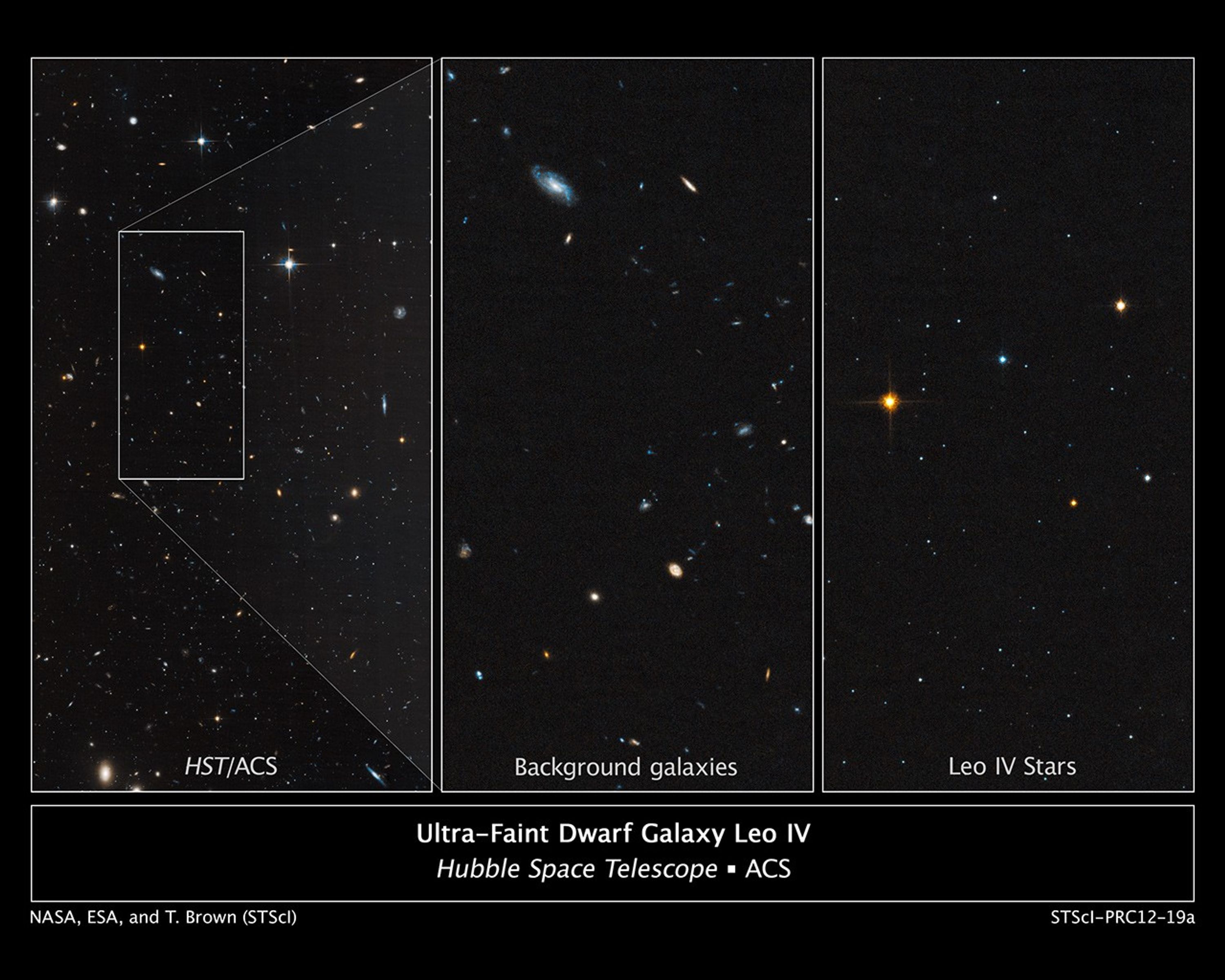
Ultra-Faint Dwarf Galaxy Leo IV
Astronomers used the Hubble Space Telescope to unmask the dim, star-starved dwarf galaxy Leo IV. These Hubble images demonstrate why astronomers had a tough time spotting this small-fry galaxy. The image at left shows part of the galaxy, outlined by the white rectangular box....
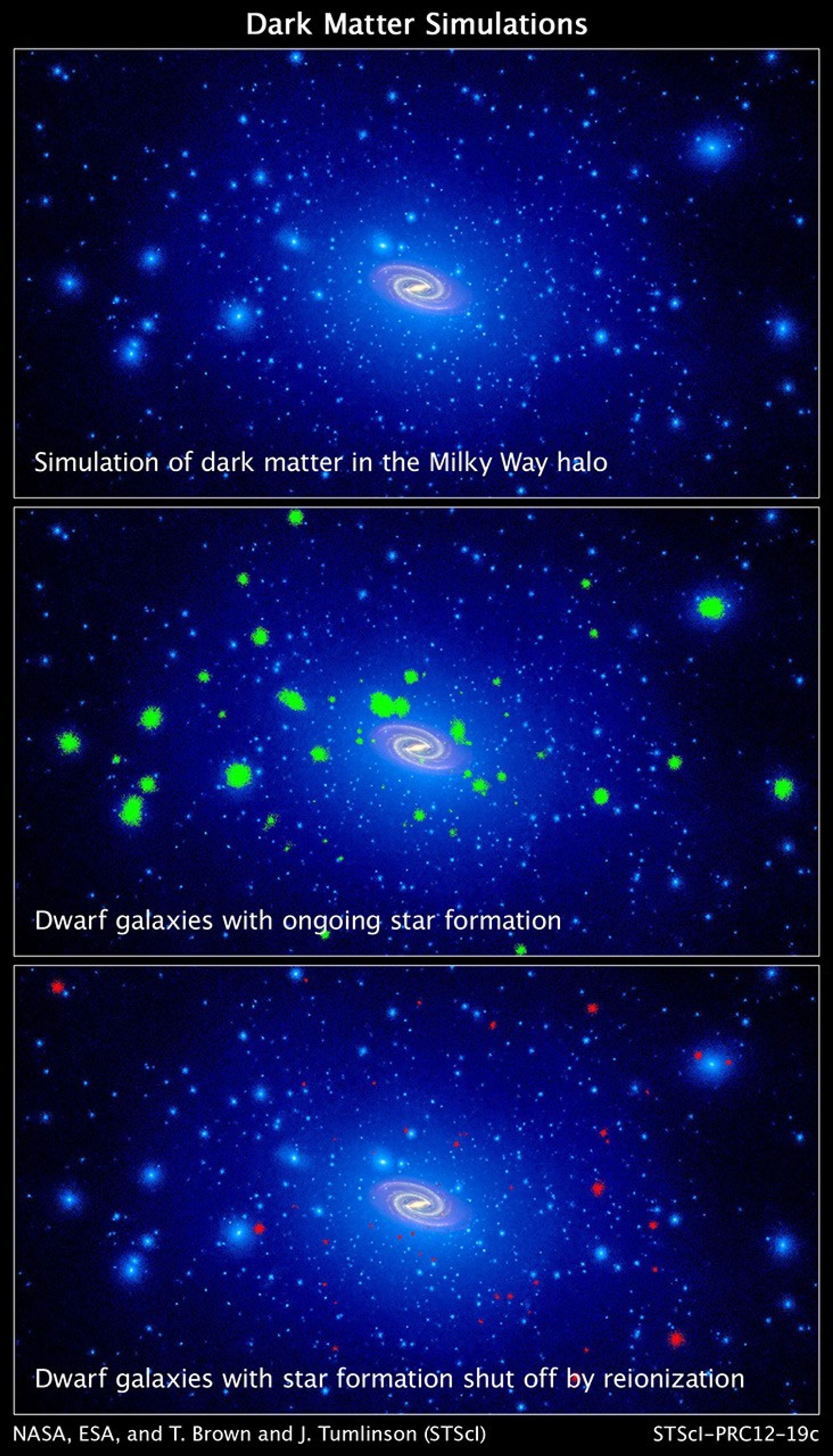
Dark Matter Simulation in Milky Way Halo
These illustrations, taken from computer simulations, show a swarm of dark matter clumps around our Milky Way galaxy. Some of the dark-matter concentrations are massive enough to spark star formation. Dark matter is an invisible substance that accounts for most of the universe's...
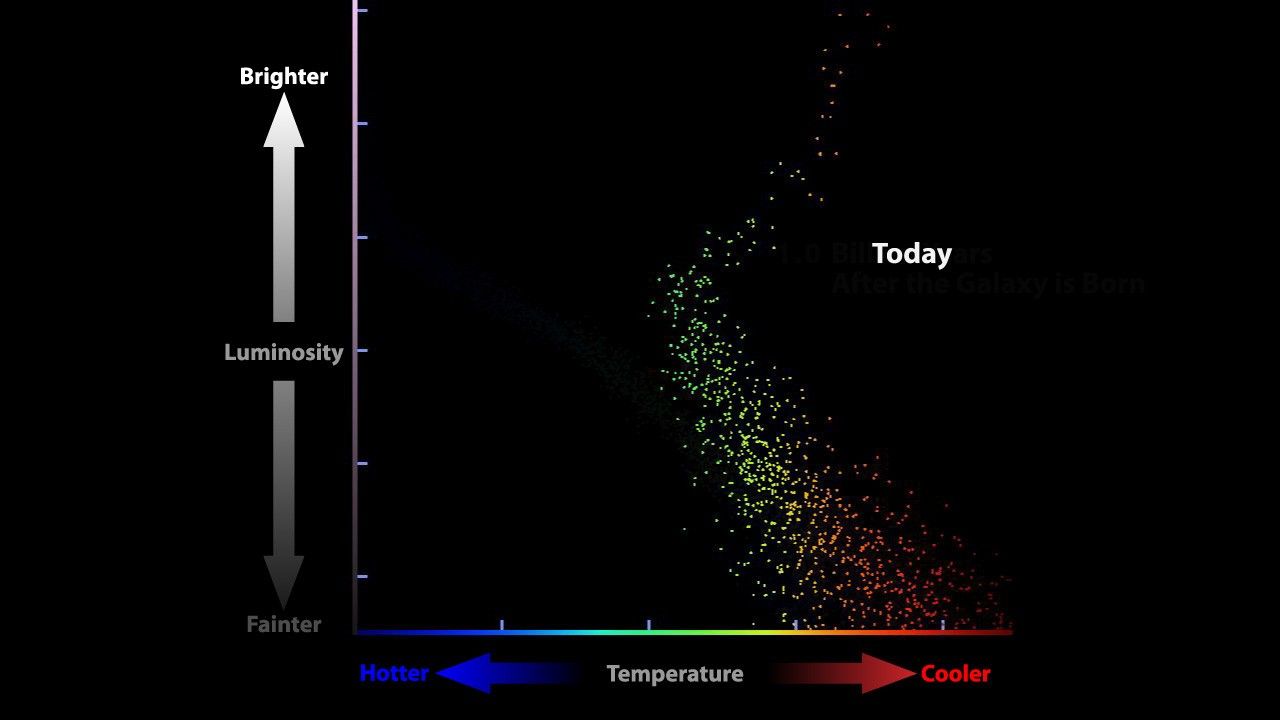
The Evolution of the Stars in the Leo IV Galaxy
This movie shows the evolution of the stars in Leo IV, a dim dwarf galaxy in the halo of our Milky Way galaxy. The Hubble Space Telescope measured the ages of these faint stars in Leo IV and two other similar galaxies, dubbed ultra-faint dwarf galaxies. The Hubble observations...
Share
Details
Claire Andreoli
NASA’s Goddard Space Flight Center
Greenbelt, Maryland
claire.andreoli@nasa.gov











